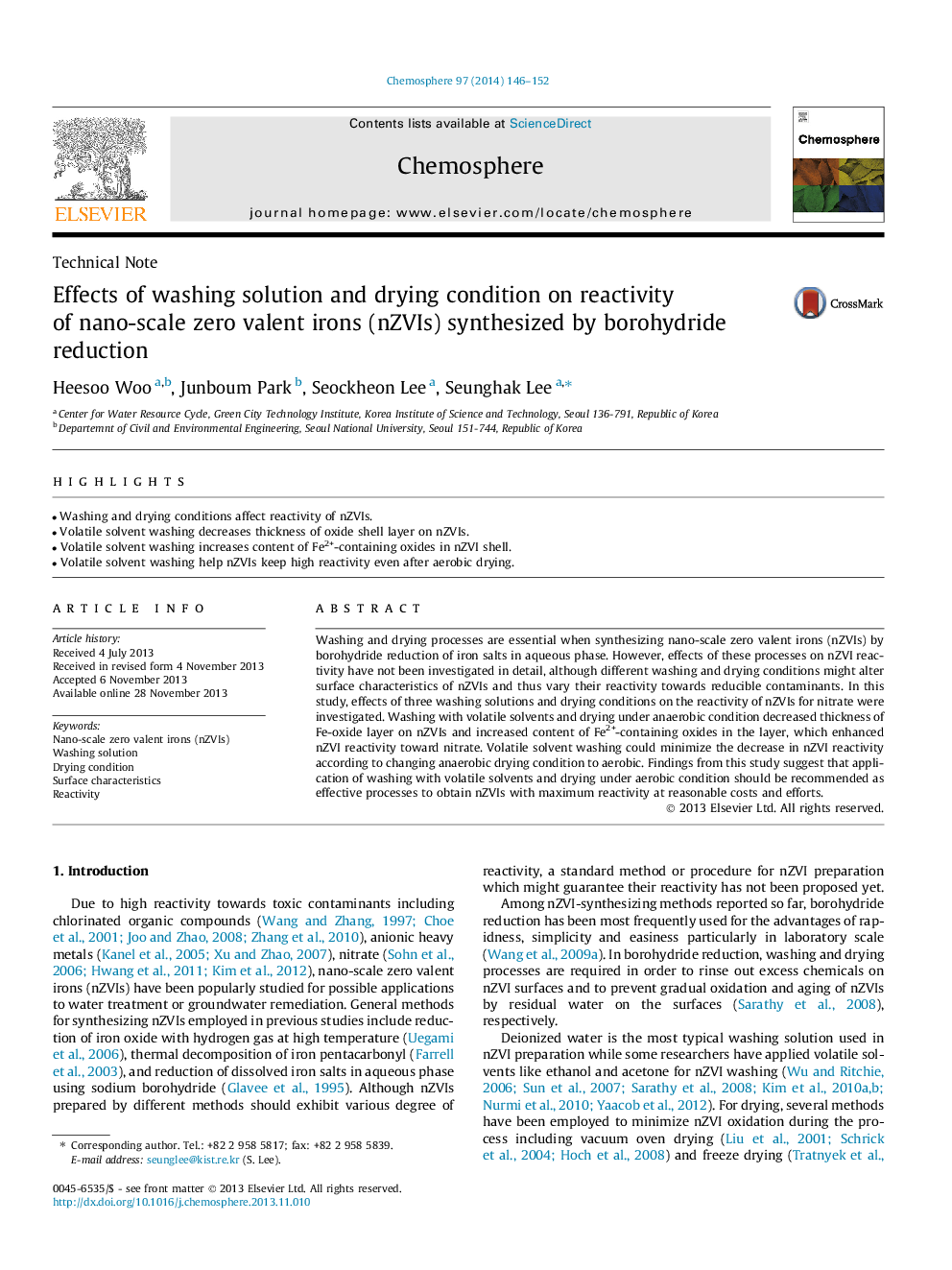| Article ID | Journal | Published Year | Pages | File Type |
|---|---|---|---|---|
| 4409000 | Chemosphere | 2014 | 7 Pages |
•Washing and drying conditions affect reactivity of nZVIs.•Volatile solvent washing decreases thickness of oxide shell layer on nZVIs.•Volatile solvent washing increases content of Fe2+-containing oxides in nZVI shell.•Volatile solvent washing help nZVIs keep high reactivity even after aerobic drying.
Washing and drying processes are essential when synthesizing nano-scale zero valent irons (nZVIs) by borohydride reduction of iron salts in aqueous phase. However, effects of these processes on nZVI reactivity have not been investigated in detail, although different washing and drying conditions might alter surface characteristics of nZVIs and thus vary their reactivity towards reducible contaminants. In this study, effects of three washing solutions and drying conditions on the reactivity of nZVIs for nitrate were investigated. Washing with volatile solvents and drying under anaerobic condition decreased thickness of Fe-oxide layer on nZVIs and increased content of Fe2+-containing oxides in the layer, which enhanced nZVI reactivity toward nitrate. Volatile solvent washing could minimize the decrease in nZVI reactivity according to changing anaerobic drying condition to aerobic. Findings from this study suggest that application of washing with volatile solvents and drying under aerobic condition should be recommended as effective processes to obtain nZVIs with maximum reactivity at reasonable costs and efforts.
